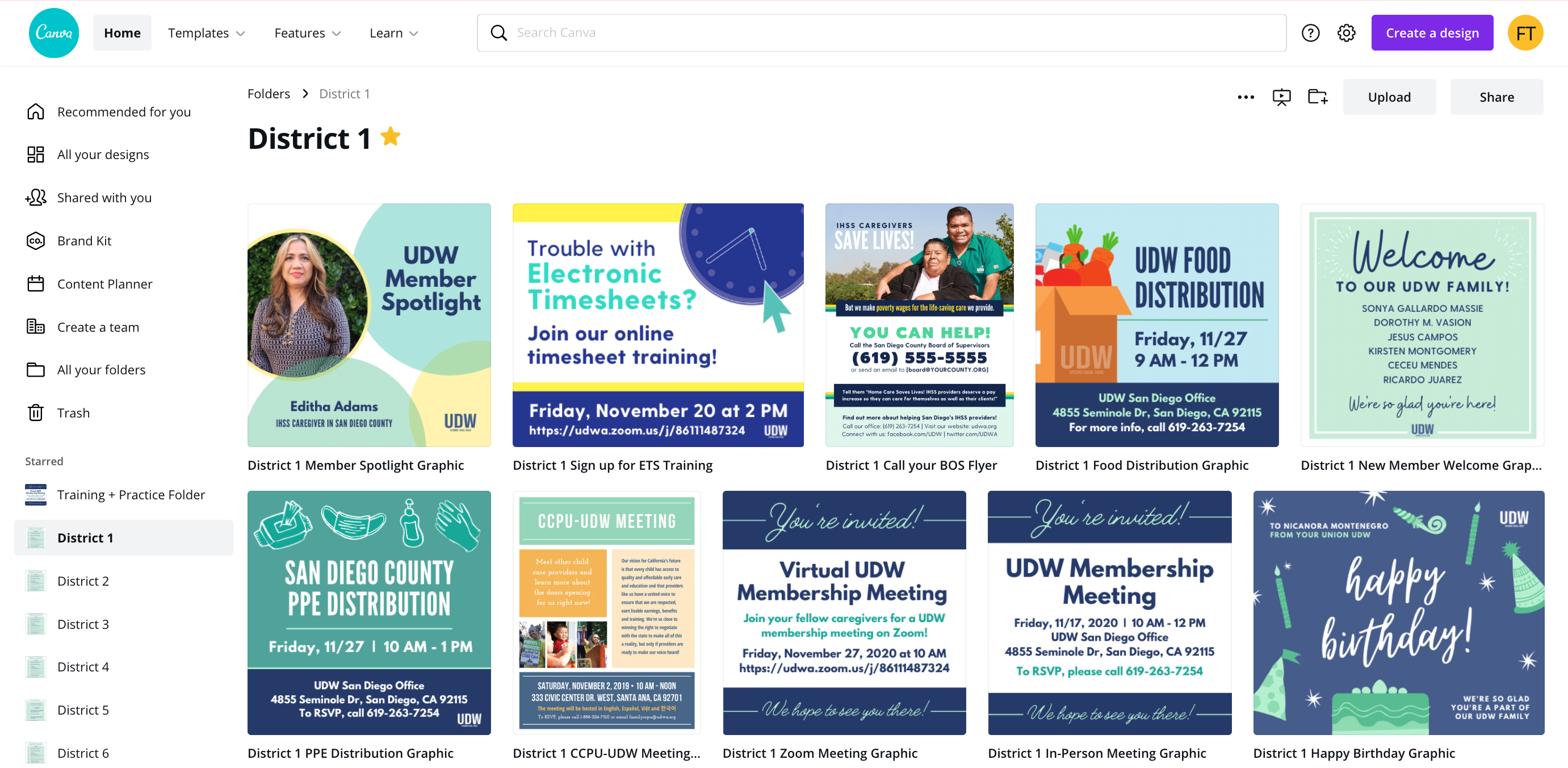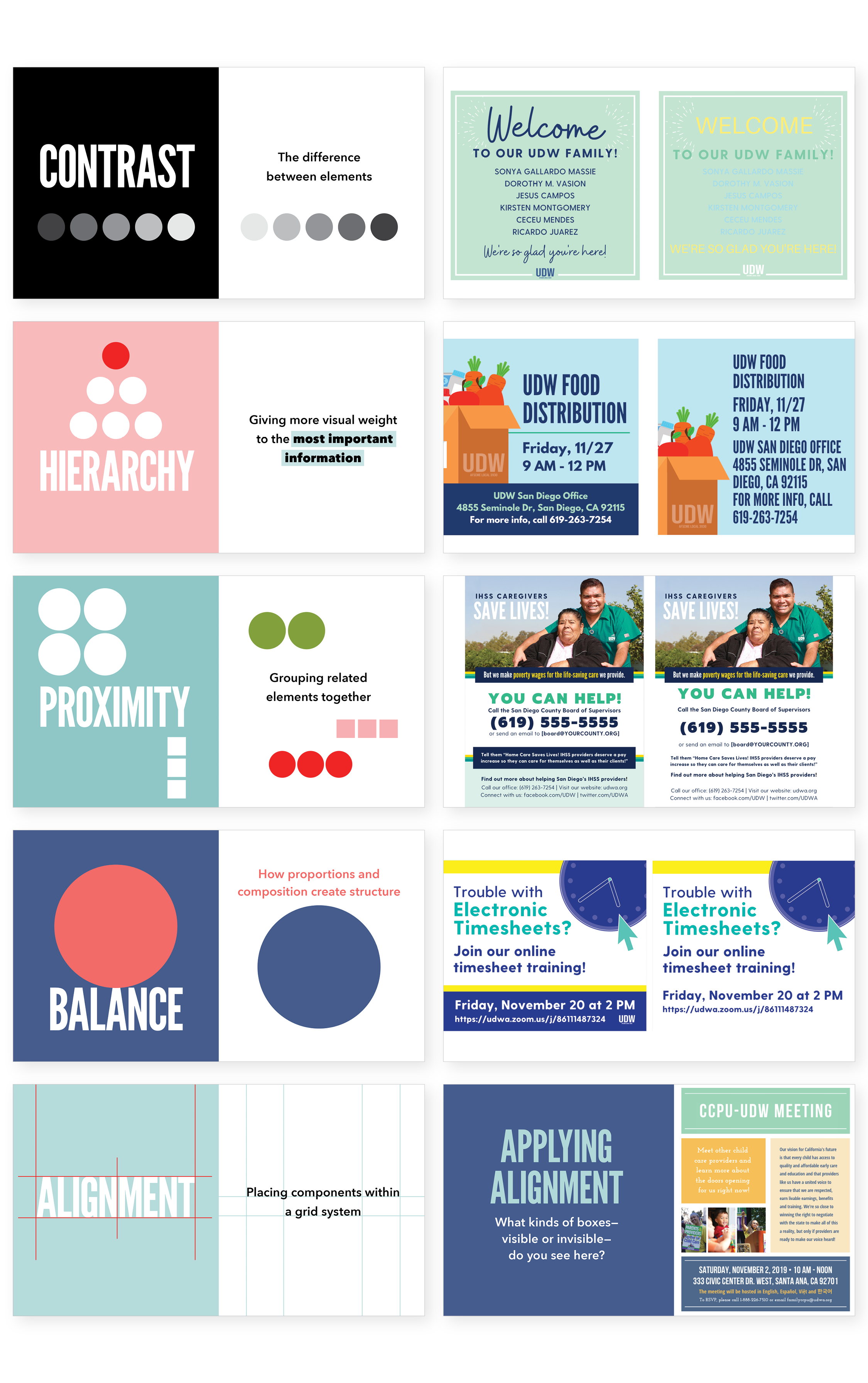A monthly workshop for community organizers who want to use design to fight (and win) for justice. As part of an effort to share knowledge and resources between different departments at UDW, I created this training to show how we can use design for shared causes.
Skills in use Collaborators
Teaching M. Kristjansson:
Workshop design Communications Director
"Not even the most committed art practice can, on its own, be a substitute for the act of being politically involved, as an organizer and activist."
— Ben Davis in "9.5 Theses on Art and Class"
Throughout the last three years as a designer in social justice organizations, I’ve learned so much from organizers; collaborating with them has pushed me to expand my comfort zone and helped me grow as an activist. Reflecting on this sentiment, I wondered how UDW organizers might use design to support their own work in the field. I saw that the information they need to communicate to our communities is often dense and complex, but through visual translation, it has the potential to transform into something more accessible and enjoyable. In October 2019, I created a library of custom Canva templates for organizers and launched a training to introduce key design principles. Because Canva is free, relatively intuitive, and accommodates both desktop and mobile editing, it’s a great way to learn about graphic design.
You can view the full design workshop with speaker notes here.
To develop the templates, I researched what kinds of visual materials (digital and print) the organizers were using in their work and I created new versions optimized for content hierarchy and visual interest. Primarily, our field team needed graphics to announce events like trainings and PPE distributions, but a few participants also asked me to include templates that they could use to increase general engagement in their facebook groups — hence the member spotlight and welcome graphics.


The workshop itself is intended to leave attendees with a few foundational design skills as well as an idea of how design can be applied more broadly in connection with their work in the field.
Based on feedback from trainees during my practice versions of the workshop, I used contrasting examples to illustrate different design principles. For example, in the the "contrast" slide, I used one of the templates (which has high contrast between colors, fonts, and type sizes) to make a low-contrast version (minimal contrast between colors, fonts, and sizing) and had participants describe the differences they saw between the two examples.
Organizers who participated in the workshop have used what they learned to facilitate more engagement in their facebook groups of local activists and generate stronger turnout to events like food and PPE drives. This summer, I am excited to expand the second phase of the training to introduce new skills and practical methods for using design in community activism.
© 2021 Khaleelah Elhajoui | All Rights Reserved
